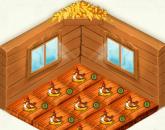Thermal treatment of solid waste. Processing of hard materials Processing of hard materials
Tool materials are materials, the main purpose of which is to equip the working part of the tools. These include tool carbon, alloy and high-speed steels, hard alloys, mineral ceramics, and superhard materials.
Basic properties of tool materials
| tool material | Heat resistance 0 С | Bending strength, MPa | Microhardness, HV | Thermal conductivity coefficient, W/(mChK) | |||||||||||||||||||||||||||||||||||||||||||||||||||||||||||||||||||||||||||||||||||||||||||||||||||||||||||||||||||||||||||||||||||||||||||||||||||||||||||||||||||||||||||||||||||||||||||||||||||||||||
| Carbon steel Alloy steel high speed steel Hard alloy Mineral ceramics cubic nitride |
8.1. Tool steels.By chemical composition, degree of alloying tool steels are divided into tool carbon, tool alloyed and high-speed steels. The physical and mechanical properties of these steels at normal temperature are quite close, they differ in heat resistance and hardenability during quenching. In tool alloy steels, the mass content of alloying elements is not enough to bind all carbon into carbides, therefore, the heat resistance of steels of this group is only 50-100 0 C higher than the heat resistance of tool carbon steels. In high-speed steels, they strive to bind all the carbon into alloying element carbides, while eliminating the possibility of the formation of iron carbides. Due to this, the softening of high-speed steels occurs at higher temperatures. Tool carbon (GOST 1435-74) and alloyed (GOST 5950-73) steels. The main physical and mechanical properties of tool carbon and alloy steels are given in the tables. Tool carbon steels are denoted by the letter U, followed by a number characterizing the mass content of carbon in the steel in tenths of a percent. So, in steel grade U10, the mass content of carbon is one percent. The letter A in the designation corresponds to high-quality steels with a reduced mass content of impurities. Chemical composition carbon tool steels
In tool alloy steels, the first digit characterizes the mass content of carbon in tenths of a percent (if there is no figure, then the carbon content in it is up to one percent). The letters in the designation indicate the content of the corresponding alloying elements: G - manganese, X - chromium, C - silicon, B - tungsten, F - vanadium, and the numbers indicate the percentage of the element. Tool alloy steels of deep hardenability grades 9XC, KhVSG, X, 11X, KhVG are distinguished by small deformations during heat treatment. Chemical composition of low-alloy tool steels
These materials have limited areas of application: carbon materials are used mainly for the manufacture of metalwork tools, and alloyed ones are used for thread-forming, woodworking and long tools (CVG) - broaches, reamers, etc. 8.2. High speed steels (GOST 19265-73)The chemical composition and strength characteristics of the main grades of these steels are given in the tables. High-speed steels are designated by letters corresponding to carbide-forming and alloying elements: P - tungsten, M - molybdenum, F - vanadium, A - nitrogen, K - cobalt, T - titanium, C - zirconium). The letter is followed by a number indicating the average mass content of the element in percent (the chromium content of about 4 percent is not indicated in the brand designation). The number at the beginning of the steel designation indicates the carbon content in tenths of a percent (for example, 11R3AM3F2 steel contains about 1.1% C; 3% W; 3% Mo and 2% V). The cutting properties of high-speed steels are determined by the volume of the main carbide-forming elements: tungsten, molybdenum, vanadium and alloying elements - cobalt, nitrogen. Vanadium due to the low mass content (up to 3%) is usually not taken into account, and the cutting properties of steels are determined, as a rule, by the tungsten equivalent equal to (W + 2Mo)%. In the price lists for high-speed steels, three groups of steels are distinguished: steels of the 1st group with a tungsten equivalent of up to 16% without cobalt, steels of the 2nd group - up to 18% and a cobalt content of about 5%, 200 or 3rd group - up to 20% and a cobalt content of 5-10%. Accordingly, the cutting properties of these groups of steels also differ. Chemical composition of high speed steels
Chemical composition of cast high speed steels
In addition to standard, special high-speed steels are also used, containing, for example, titanium carbonitrides. However, the high hardness of the blanks of these steels, the complexity of machining are not conducive to widespread use. When processing hard-to-cut materials, powder high-speed steels R6M5-P and R6M5K5-P are used. The high cutting properties of these steels are determined by a special fine-grained structure that increases strength, reduces the radius of the cutting edge, improved machinability and, in particular, grinding. Currently, industrial tests are being carried out on tungsten-free high-speed steels with a high content of various alloying elements, including aluminum, malybdenum, nickel and others. One of the significant disadvantages of high speed steels is associated with carbide inhomogeneity, i.e. with an uneven distribution of carbides over the cross section of the workpiece, which, in turn, leads to uneven hardness of the cutting blade of the tool and its wear. This drawback is absent in powder and maraging (with a carbon content of less than 0.03%) high-speed steels.
8.3. Hard alloys (GOST 3882-74)Hard alloys contain a mixture of grains of carbides, nitrides, carbonitrides of refractory metals in binders. Standard grades of hard alloys are made on the basis of tungsten, titanium, tantalum carbides. Cobalt is used as a binder. The composition and basic properties of some grades of hard alloys for cutting tools are given in the table. Physical and mechanical properties of one-, two- and three-carbide hard alloys Composition of physical and mechanical properties of tungsten-free hard alloys Depending on the composition of the carbide phase and the bond, the designation of hard alloys includes letters characterizing the carbide-forming elements (B - tungsten, T - titanium, the second letter T - tantalum) and the bond (letter K - cobalt). The mass fraction of carbide-forming elements in single-carbide alloys containing only tungsten carbide is determined by the difference between 100% and the mass fraction of the binder (number after the letter K), for example, VK4 alloy contains 4% cobalt and 96% WC. In two-carbide WC + TiC alloys, the number after the letter of the carbide-forming element is determined by mass fraction carbides of this element, the next figure is the mass fraction of the binder, the rest is the mass fraction of tungsten carbide (for example, the T5K10 alloy contains 5% TiC, 10% Co and 85% WC). In three-carbide alloys, the number after the letters TT means the mass fraction of titanium and tantalum carbides. The number behind the letter K is the mass fraction of the binder, the rest is the mass fraction of tungsten carbide (for example, the TT8K6 alloy contains 6% cobalt, 8% titanium and tantalum carbides and 86% tungsten carbide). in metalworking ISO standard three groups of applicability of carbide cutting tools are distinguished: group P - for processing materials that produce continuous chips; group K - fracture chips and group M - for processing various materials (universal hard alloys). Each area is divided into groups and subgroups. Hard alloys are mainly produced in the form of plates of various shapes and manufacturing accuracy: soldered (glued) - in accordance with GOST 25393-82 or replaceable multifaceted - in accordance with GOST 19043-80 - 19057-80 and other standards. Multifaceted inserts are produced both from standard grades of hard alloys, and from the same alloys with single-layer or multi-layer superhard coatings of TiC, TiN, aluminum oxide and other chemical compounds. Plates with coatings have increased durability. The marking of the letters KIB (TU 2-035-806-80) is added to the designation of plates from standard grades of hard alloys coated with titanium nitrides, and the letter C is added to the designation of alloys according to ISO. Plates are also produced from special alloys (for example, according to TU 48-19-308-80). Alloys of this group ("MS" group) have higher cutting properties. The designation of the alloy consists of the letters MC and a three-digit (for inserts without coatings) or four-digits (for inserts coated with titanium carbide) number: The 1st digit of the designation corresponds to the scope of the alloy according to the ISO classification (1 - processing of materials that give a drain chip; 3 - processing of materials that give a fracture chip; 2 - processing area corresponding to the area M according to ISO); The 2nd and 3rd digits characterize the applicability subgroup, and the 4th digit - the presence of coverage. For example, MC111 (analogue of the standard T15K6), MC1460 (analogue of the standard T5K10), etc. In addition to finished plates, blanks are also produced in accordance with OST 48-93-81; the designation of blanks is the same as for finished plates, but with the addition of the letter Z. Tungsten-free hard alloys are widely used as materials that do not contain scarce elements. Tungsten-free alloys are supplied in the form of finished plates of various shapes and sizes, degrees of accuracy U and M, as well as blanks of plates. The applications for these grades are similar to those for dual carbide carbides in non-shock applications.
8.4. Mineral ceramics (GOST 26630-75) and superhard materialsMineral-ceramic tool materials have high hardness, heat and wear resistance. They are based on alumina (silicon oxide) - oxide ceramics or a mixture of silicon oxide with carbides, nitrides and other compounds (cermets). The main characteristics and applications of various grades of mineral ceramics are given in the table. Shapes and dimensions of interchangeable polyhedral ceramic plates are defined by the GOST 25003-81* standard. In addition to the traditional grades of oxide ceramics and cermets, oxide-nitride ceramics are widely used (for example, ceramics of the "cortinite" brand (a mixture of corundum or aluminum oxide with titanium nitride) and silicon nitride ceramics - "silinit-R". Physical and mechanical properties of tool ceramics
Synthetic superhard materials are made either on the basis of cubic boron nitride - CBN, or on the basis of diamonds. CBN group materials have high hardness, wear resistance, low coefficient of friction and inertness to iron. The main characteristics and effective areas of use are shown in the table. Physical and mechanical properties of STM based on CBNRecently, this group also includes materials containing the composition Si-Al-O-N ( trademark"sialon"), based on silicon nitride Si3N4. Synthetic materials are supplied in the form of blanks or ready-made wear plates. Based on synthetic diamonds, such brands as ASB - synthetic diamond "ballas", ASPK - synthetic diamond "carbonado" and others are known. The advantages of these materials are high chemical and corrosion resistance, minimal blade rounding radii and coefficient of friction with the material being processed. However, diamonds have significant disadvantages: low bending strength (210-480 MPa); chemical activity to some fats contained in the coolant; dissolution in iron at temperatures of 750-800 C, which practically excludes the possibility of their use for processing steels and cast iron. Basically, polycrystalline artificial diamonds are used for processing aluminum, copper and alloys based on them. Purpose of STM based on cubic boron nitride
| ||||||||||||||||||||||||||||||||||||||||||||||||||||||||||||||||||||||||||||||||||||||||||||||||||||||||||||||||||||||||||||||||||||||||||||||||||||||||||||||||||||||||||||||||||||||||||||||||||||||||||||
Choice of a bunch of abrasive tools
The bond determines the strength and hardness of the tool, has a great influence on the modes, productivity and quality of processing. Ligaments are inorganic (ceramic) and organic (bakelite, volcanic).
CERAMIC BOND It has high fire resistance, water resistance, chemical resistance, retains the profile of the working edge of the wheel well, but is sensitive to shock and bending loads. Vitrified bonded tools are used for all types of grinding except roughing (due to bond fragility): for cutting and cutting narrow grooves, flat grinding of grooves of ball bearing rings. The vitrified bond tool retains its profile well, has high porosity, and removes heat well.
BAKELITE BOND has higher strength and elasticity than ceramic. Bakelite-bonded abrasive tools can be made in various shapes and sizes, including very thin ones - up to 0.5 mm for cutting work. The disadvantage of the bakelite bond is the low resistance to the action of coolants containing alkaline solutions. When using a bakelite bond, the coolant must not contain more than 1.5% alkali. The bakelite bond has a weaker adhesion to the abrasive grain than the ceramic bond, so the tool on this bond is widely used in flat grinding operations where self-sharpening of the wheel is necessary. A tool on a bakelite bond is used for rough peeling work performed manually and on suspended walls: flat grinding with the end of a circle, cutting and cutting grooves, sharpening tools, when processing thin products, where burning is dangerous. Bakelite bond has a polishing effect.
Choice of brand of abrasive material
Abrasives(fr. abrasif - grinding, from lat. abradere - scrape off) - these are materials with high hardness and used for surface treatment of various materials. are used in the processes of grinding, sharpening, polishing, cutting materials and are widely used in blank production and final processing of various metal and non-metal materials. Natural abrasives - flint, emery, pumice, corundum, garnet, diamond and others. Artificial: electrocorundum, silicon carbide, borazone, elbor, synthetic diamond and others.
ELECTROCORUNDUS NORMAL
It has excellent heat resistance, high bond adhesion, mechanical strength of the grains and significant toughness, which is important for operations with variable loads Machining materials with high tear resistance. This is the peeling of steel castings, wires, rolled products, high-strength and chilled cast irons, ductile iron, semi-finishing of various machine parts from carbon and alloy steels in non-hardened; and hardened form, manganese bronze, nickel and aluminum alloys. 25A
ELECTROCORUNDUM WHITE
In terms of physical and chemical composition, it is more homogeneous, has a higher hardness, sharp edges, good self-sharpening, better eliminates surface roughness in comparison with normal electrocorundum Processing hardened parts made of carbon, high-speed and stainless steels, chrome-plated and nitrated surfaces. Processing of thin parts and tools, sharpening, flat, internal, profile and finish grinding. 38A
ELECTRIC CORUNDUS ZIRCONIUM
Fine-grained, dense and durable material. Tool life in roughing operations is 10-40 times higher than a similar tool made of normal electrocorundum. Rough grinding of steel billets at high speed, feed and clamping force. Power rough grinding of steel workpieces. 54C
SILICON CARBIDE BLACK
It has high hardness, abrasive ability and brittleness. The grains have the form of thin plates, which increases their fragility in work. Processing of hard materials with low tear resistance (cast iron, bronze and brass castings, hard alloys, precious stones, glass, marble, graphite, porcelain, hard rubber, bones, etc.), as well as very viscous materials (heat-resistant steels, alloys, copper, aluminum rubber). 63C
SILICON CARBIDE GREEN
It differs from black silicon carbide in increased hardness, abrasive ability and brittleness. For machining parts made of cast iron, non-ferrous metals, granite, marble, hard alloys, processing titanium, titanium-tantalum hard alloys, honing, finishing work for parts made of gray cast iron, nitrided and ball bearing steel. 95A
ELECTROCORUNDUS TITANIUM CHROME
It has higher mechanical strength and abrasive ability compared to normal electrocorundum
Rough grinding with high metal removal
Tool Grain Selection
| Grain | Type of processing |
| LargeF6-F24 | Peeling operations with a large depth of cut, cleaning of workpieces, castings. Processing of materials that cause clogging of the wheel surface (brass, copper, aluminum). |
| F24-F36 | Flat grinding with the end face of a circle, sharpening of cutters, dressing of abrasive tools, cutting off. |
| MediumF30 - F60 | Preliminary and combined grinding, sharpening of cutting tools. |
| F46-F90 | Fine grinding, processing of profiled surfaces, sharpening of small tools, grinding of brittle materials. |
| smallF100-F180 |
Fine grinding, finishing of hard alloys, finishing of cutting tools, steel blanks, sharpening of thin blades, preliminary honing.
Coarse-grained tools are used:
- during peeling and preliminary operations with a large depth of cut, when large allowances are removed;
- when working on machines of high power and rigidity;
- when processing materials that cause the filling of the pores of the circle and the clogging of its surface, for example, when processing brass, copper and aluminum;
- with a large contact area of the wheel with the workpiece, for example, when using high circles, when flat grinding with the end of the circle, when internal grinding.
Medium and fine-grained tools are used:
- to obtain a surface roughness of 0.320-0.080 microns;
- when processing hardened steels and hard alloys;
— at final grinding, sharpening and fine-tuning of tools;
- with high requirements for the accuracy of the processed profile of the part.
With a decrease in the size of abrasive grains, their cutting ability increases due to an increase in the number of grains per unit of the working surface, a decrease in the grain rounding radii, and less wear of individual grains. Reducing the grain size leads to a significant reduction in the pores of the wheel, which makes it necessary to reduce the depth of grinding and the amount of allowance removed during the operation. The finer the abrasive grains in the tool, the less material is removed from the workpiece per unit time. However, fine-grained tools are less self-sharpening than coarser-grained tools, resulting in faster dulling and clogging. The rational combination of the processing mode, tool dressing and grit allows you to obtain high accuracy and excellent surface finish.
Selection of tool hardness
O, P, Q Profile grinding, intermittent surfaces, honing and thread grinding of coarse pitch workpieces. MediumM-N Surface grinding with segments and annular wheels, honing and thread grinding with Bakelite bonded wheels. Medium softK-L Finishing and combined round, external centerless and internal grinding of steel, flat grinding, thread grinding, sharpening of cutting tools. SoftH-F Sharpening and finishing of cutting tools equipped with hard alloys, grinding of hard-to-machine special alloys, polishing.
The hardness of the tool largely determines the productivity of labor during processing and the quality of the machined.
Abrasive grains, as they become blunt, must be renewed by chipping and chipping particles. If the wheel is too hard, the bond continues to hold the grains that have become dull and have lost their cutting ability. At the same time, a lot of power is consumed for work, the products heat up, their warping is possible, traces of cutting, scratches, burns and other defects appear on the surface. If the wheel is too soft, the grains that have not lost their cutting ability crumble, the wheel loses its correct shape, its wear increases, as a result of which it is difficult to obtain parts of the required size and shape. During processing, vibration appears, more frequent dressing of the circle is necessary. Thus, one should responsibly approach the choice of the hardness of the abrasive tool and take into account the characteristics of the workpieces.
A high-tech and complex process that requires special equipment and special tools. This is due to the fact that such alloys have high elasticity and strength, and therefore strongly resist cutting, drilling, grinding and other machining. At the same time, the quality of the corresponding process largely depends on the characteristics of the metal and the correct selection of the cutting tool.
Carbide Features
Hard-to-cut metals include heat-resistant and stainless steels and alloys. These materials are a solid solution of the austenitic class, so they have such qualities as high resistance to corrosion, the ability to work in a stressed state for a long time, and resistance to chemical destruction. In addition, some types of these metals have a highly dispersed structure. Due to this, the sliding process practically does not occur.
Processing is also complicated for the following reasons:
- when cutting, the material is hardened;
- alloys of this nature have low thermal conductivity, and therefore the contact part of the workpiece and tool begin to seize;
- original strength is maintained even at very high temperatures;
- high abrasion ability of alloys leads to the formation of inclusions that adversely affect the tool;
- the vibration resistance of metals is determined by the uneven flow of the cutting process, which means that it will not work to obtain the desired quality of processing.
Tool selection
In order to avoid all the problems described above and to carry out high-quality processing of hard alloys, it is necessary first of all to choose the right tool. It must be made of a metal that has higher cutting properties than the workpiece. At the same time, experts recommend using carbide cutters for pre-treatment, and high-speed cutters for finishing. The latter include steel grades R14F4, R10K5F5, R9F5, R9K9.
For the manufacture of tools from carbide metals, three types of alloys are used:
- T30K4, T15K6, VKZ - wear-resistant;
- T5K7, T5K10 - are distinguished by high viscosity;
- VK6A, VK8 - are insensitive to shocks, have the least resistance to wear.
To harden the tools and improve their performance, the second layer of carbide metal, cyanidation, chromium plating, and cladding are additionally applied.
coolant
The correct selection of coolants and the method of their application is no less important process if it is necessary to machine hard alloys. For drilling, experts recommend using mineral-based materials. They especially increase productivity when working with titanium, which is very difficult to work with. For turning alloyed steels, semi-synthetic coolants are suitable, for honing and grinding cast iron - a fluid without mineral oils. There are also universal materials that are very beneficial to use if the nature of metal processing is constantly changing.
The most optimal way of supplying coolant when working with hard metals is considered to be high-pressure, in which the liquid is supplied in a thin stream to the back wall of the tool. Equally effective are liquid atomization and carbon dioxide cooling. All this allows to increase tool life and improve the quality of processing.
equipment requirements
Equipment for working hard metals is very different from standard machine tools. These models are different:
- increased rigidity of all mechanisms;
- vibration resistance;
- high power;
- the presence of channels for chip removal;
- special landing places for fixing a short tool.
Popular
- Cash farms with withdrawal
- Earn money for just sitting on the Internet!
- Selection of equipment for the production of cotton gloves Business plan for the production of work gloves
- Barbecue business: how to open a barbecue
- How to open a marriage agency from scratch?
- How to open a recruitment agency: documents and requirements
- Business idea: artificial flowers Business idea selling artificial flowers
- What kind of business can be started in the village from scratch?
- Pancake shop business plan: description and recommendations of professionals Buy a pancake stall
- List of new productions in Russia




